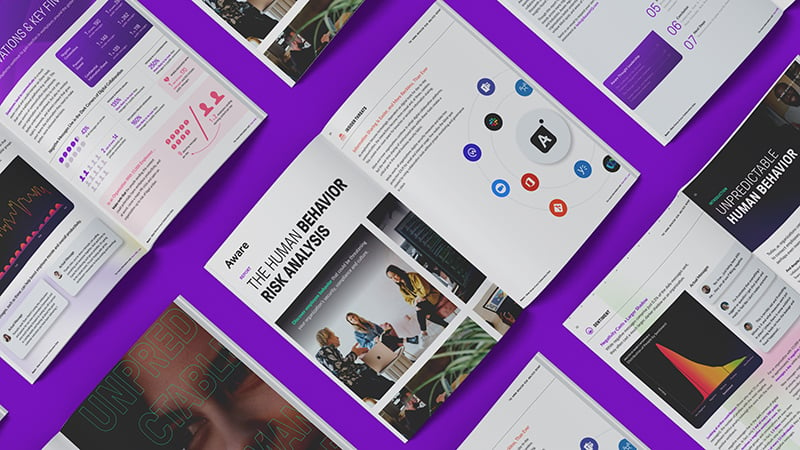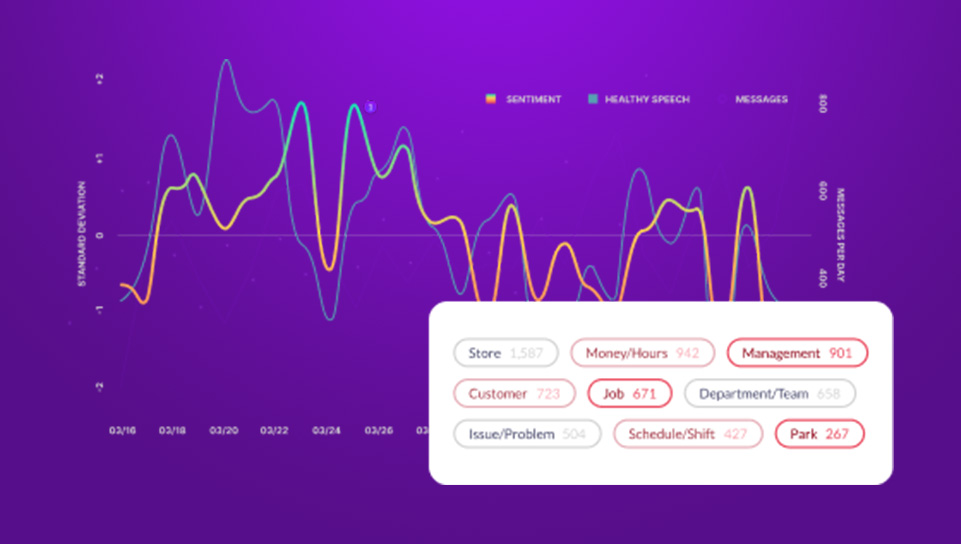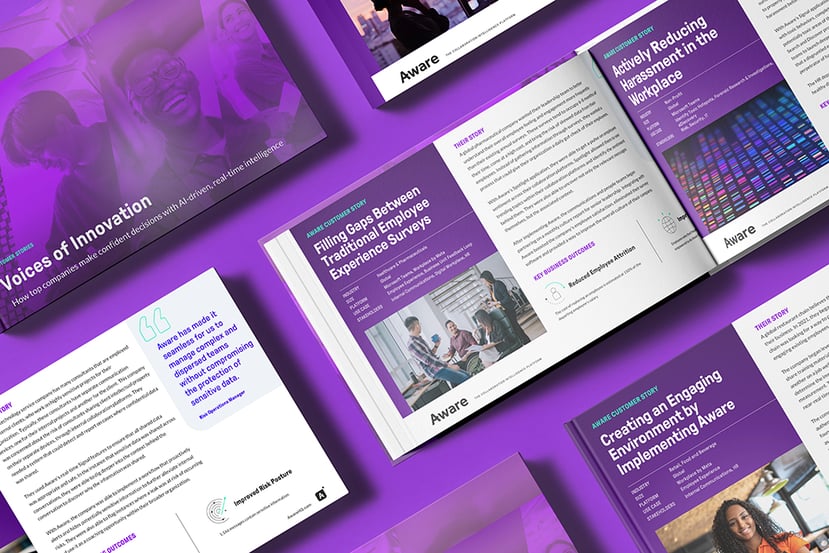5 Proven Adoption Strategies for a Thriving Yammer Network
by Aware
Yammer (now Microsoft Viva Engage) is a unique platform that aims to strengthen employee connections and communications. These 5 strategies give IT leaders the Yammer governance and security guidance they need to transform their business and drive employee morale through enterprise social networks.
What is Yammer/Microsoft Viva Engage?
Yammer is a robust enterprise social networking tool that fosters a culture of open learning and sharing. Organizations of all sizes can use Yammer’s features such as microblogging, file sharing and task tracking to seamlessly collaborate.
Before launching Yammer in your organization, it’s important that change managers establish a detailed strategy on how to best engage users and drive adoption while maintaining appropriate governance and compliance controls. Keep reading for 5 strategies that will help you drive – and protect – a thriving Yammer network.
5 Proven Strategies for a Thriving Yammer Network
- Identify and articulate the purpose of Yammer within your organization
- Attain (and maintain) leadership buy-in for Yammer
- Define why and how employees should use Yammer
- Proactively manage human behavior risk in collaboration
- Respect your users’ data privacy
1. Identify and Articulate the Purpose of Yammer Within Your Organization
In order to achieve wall-to-wall, enthusiastic adoption of collaboration, your workforce must fully understand why Yammer and how it aligns with the long-term goals and mission of your organization.
Work with leaders across your organization to understand your unique business challenges and how Yammer can help address them. The better you articulate the purpose of Yammer for your organization, the easier it will be to achieve cross-functional buy-in for a digital community.
2. Attain (and Maintain) Leadership Buy-In for Yammer
When rolling out any new technology across an enterprise, it is extremely important to get the buy-in from leaders across the organization.
The word ‘leadership’ might bring executives to the forefront of your mind; however, middle management plays an even bigger role in driving employee adoption. Middle managers who shift their work-related communications onto Yammer force their team to integrate the practice into their day-to-day. If middle management does not utilize Yammer to communicate and model digital collaboration with their team, then accomplishing wall-to-wall employee adoption will be very difficult for your organization.
3. Define Why and How Employees Should Use Yammer
From the moment your organization decides to roll Yammer out, you must ensure that employees have access to training content and resources that can fully support their Yammer network activity while maintaining the right governance and compliance controls to protect sensitive business data.
Yammer is especially powerful because it seamlessly works with Microsoft Teams. However, one of the biggest questions to answer for employees is ‘when should I use Yammer?’ This is unique for every organization, but often a solution like Microsoft Teams is useful for everyday project work, while Yammer offers a space for knowledge sharing or widespread communications. Outline tangible examples to illustrate when employees should turn to Yammer versus another tool.
4. Proactively Manage Human Behavior Risk in Collaboration
Yammer is an enterprise-grade and secure collaboration platform. However, the potential risk in any collaboration tool is what people might share on the tool. Examples of potential concerns include sensitive information sharing, bullying or sexual harassment.
Proactively partner with departments who manage risk in order to keep the platform on the trusted and approved list. Work with them to understand the liabilities that keep them awake at night and then define a communication plan for how to respond to these areas of risk:
| Department | Category of Shared Content | Approved Areas | Response Plan for Unendorsed Sharing |
|---|---|---|---|
|
Human Resources |
Personal Topics |
Private Communities, Private Messages, 'Just for Fun' Community |
If shared in inappropriate public community, reach out via private message and coach a more appropriate location for the personal content. |
| Human Resources | Swear Words | Private Messages Only | If shared in public community, reach out to content author and coach on appropriate communication practices. |
| Compliance | Customer PII (e.g. social security #) |
None | Remove automatically and send note to content author explaining that it is not appropriate to share customer PII of any kind in Yammer. |
| InfoSecurity | Uploaded Files | None | Remove automatically and send note to content author explaining the file upload policy. Recommend Box or Dropbox to share documents in Yammer. |
5. Respect Your Users’ Data Privacy
Once you have achieved a thriving Yammer network, employees will connect with their colleagues, share experiences and accomplish day-to-day tasks on the public and private areas of the tool.
That means your Yammer network will hold a lot of employee data and it's essential that you protect both your organization and your users with a proactive information governance strategy for maintaining compliance with data privacy regulations.
In the United States, since 2020 the California Consumer Privacy Act (CCPA) has afforded California residents the right to access their personal data, refuse the sale of their personal data and request a business delete any of their personal information.
However, one of the most sweeping and stringent data privacy regulations is the General Data Protection Regulation (GDPR), which applies to any business that processes data from EU citizens (even if that business is outside the EU!).
Because the GDPR protects both consumers and employees, administrators of Yammer should consider two primary data rights outlined by the GDPR:
Data Subject Access Request: People have the right to obtain: confirmation that their data is being processed and access to their personal data
Right to Erasure: People have the 'right to be forgotten' when there is no compelling reason to continue processing their personal data
Work with your Data Protection Officer to put a plan in place in the event that an employee files an Employee Subject Data Access Request.







